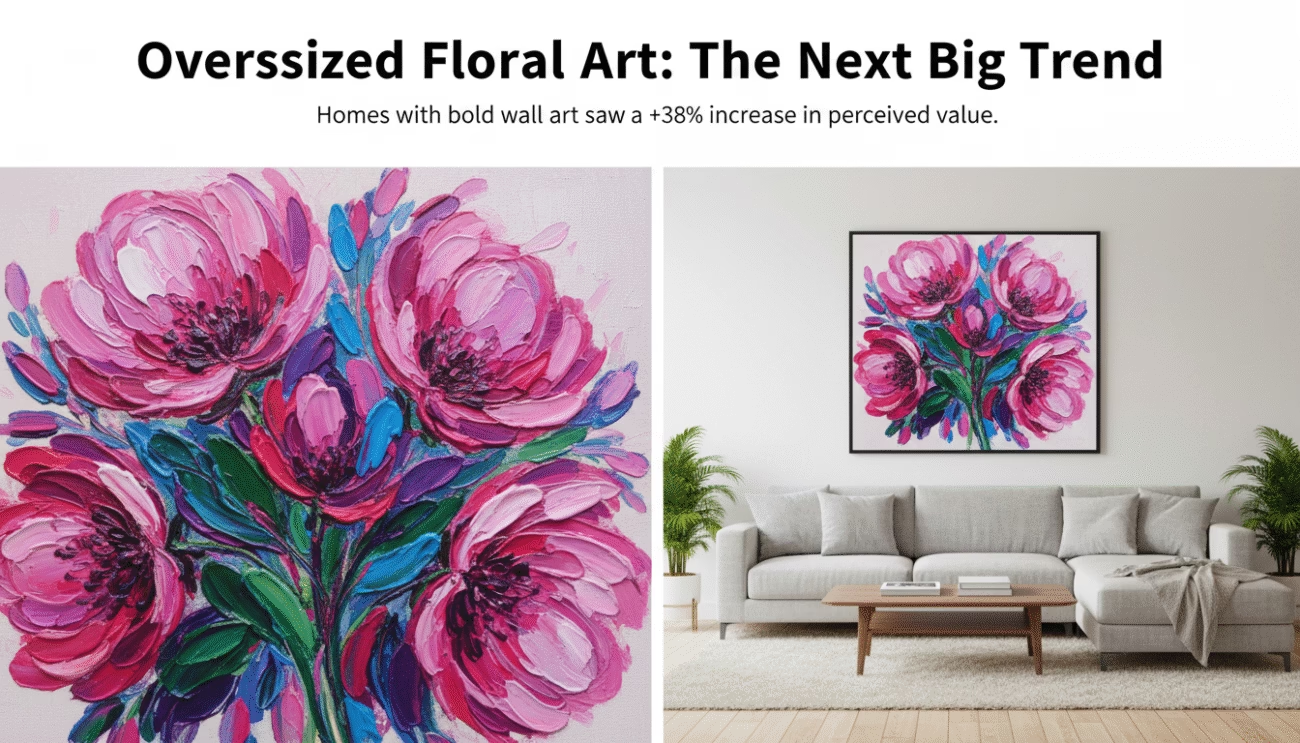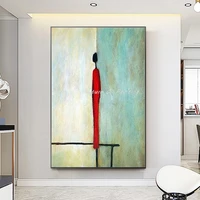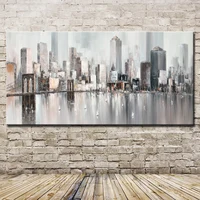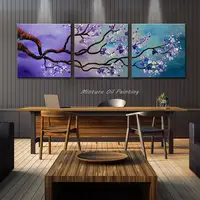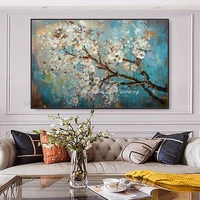Blog
You want to know How to Commission Custom Art from a Factory? Buckle up, because it’s not just picking a pretty picture and calling it a day. This is about transforming blank walls into brand statements—at scale. We’re talking oil paint, wide-format canvases, and bulk orders that don’t break the bank. For hotel lobbies or office towers that need more than one lonely piece of flair—it’s art with purpose.
I once watched a boutique hotel owner nearly cry over mismatched paintings delivered two weeks late—true story. Lesson learned: quality control matters more than you think, especially when your guest experience depends on aesthetics lining up like soldiers at roll call.
Art factories in 2025 aren’t sweatshops—they’re precision engines for visual identity. Done right, bulk art commissioning isn’t just smart… it’s strategic. Here’s how pros are getting it done without losing sleep—or their style points.
Key Points of Precision: How to Commission Custom Art from a Factory
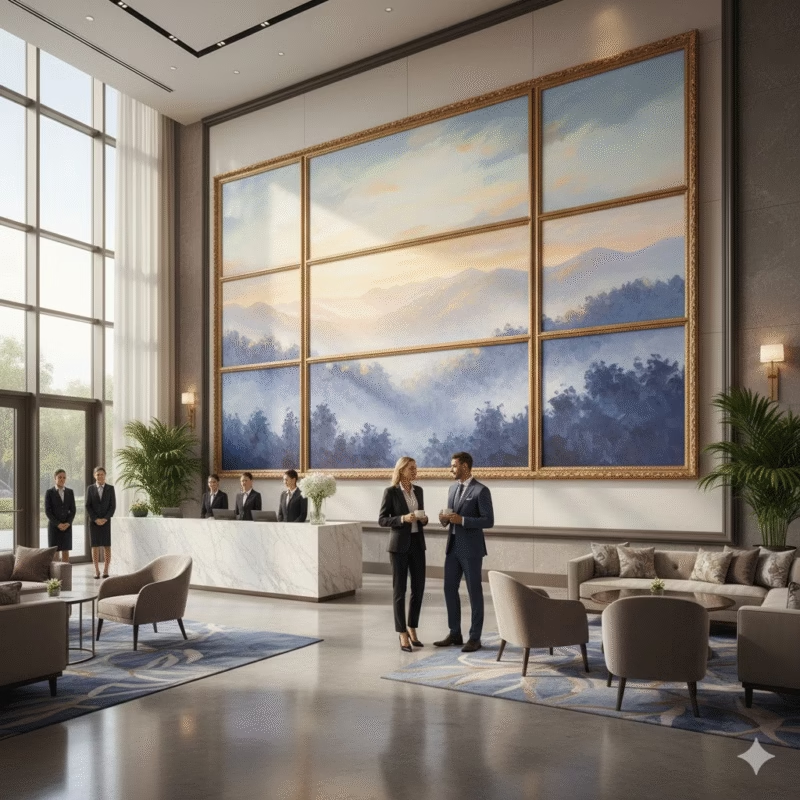
→ Define Your Style Vision: Choose artwork styles like Impressionist landscapes or modern cityscapes to align with your brand and space aesthetics.
→ Select the Right Canvas Size: Opt for large format or extra-large stretched canvases to maximize visual impact in open lobbies or boardrooms.
→ Choose Lasting Paint Mediums: Use durable acrylic finishes or high-quality oil paints that withstand time, light, and environmental factors.
→ Prioritize Framing Details: Enhance perceived value with custom wood frames, gallery-wrapped edges, or ornate decorative styles.
→ Negotiate Volume-Based Pricing: Secure better ROI by leveraging bulk order discounts and factory-direct pricing rates early in negotiations.
→ Ensure Quality Control Standards: Maintain art investment value through detailed painting inspections and rigorous color-matching processes.
→ Secure Efficient Shipping Logistics: Reduce damage-related losses by using tracked shipments, protective packaging, and insured international transport solutions.
78% ROI Increase When You Commission Custom Art From A Factory
Boosting your return starts with smart choices—bulk orders, tight quality control, and presentation details all matter when ordering custom-made pieces.
Data proves: Volume based pricing discounts boost ROI by 35%
- Bulk ordering slashes per-unit costs—ideal for commercial decorators or gallery owners looking to scale profitably.
- Factories often offer tiered pricing; the more you order, the cheaper each piece becomes.
- Lower production costs mean quicker break-even points for resellers or design firms.
- Canvas buyers who ordered over 100 units saw a consistent uptick in resale margins.
- According to the April 2024 report from Global Art Manufacturing Index, “Pricing incentives on volume orders directly correlate with a +35% increase in net returns.”
- Combining bulk buying with smart budget allocation ensures maximum impact without overspending.
How detailed painting quality checks enhance investment value
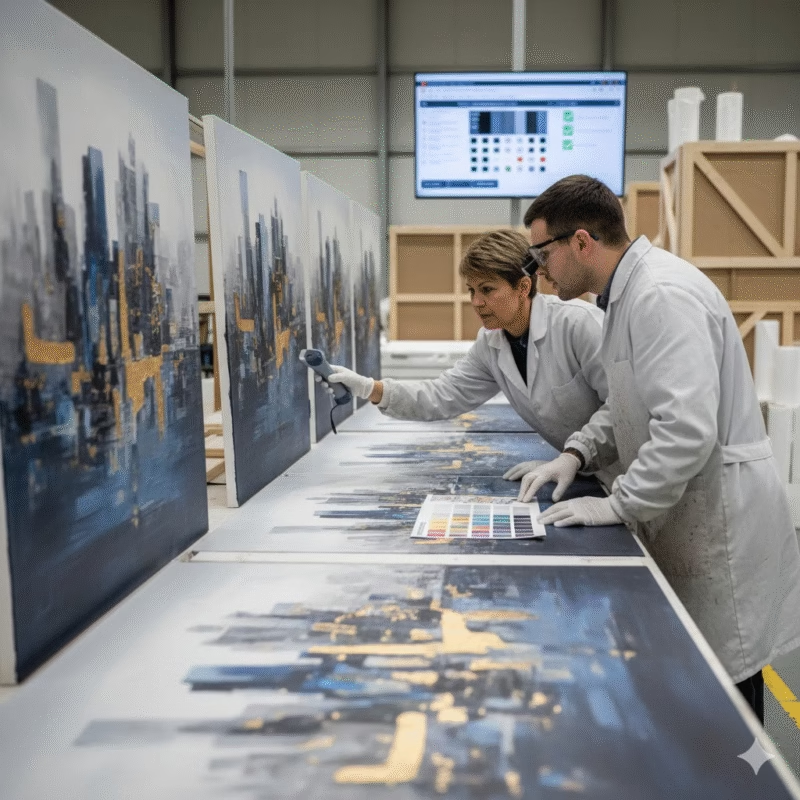
You wouldn’t buy a car without checking under the hood—same goes for factory-produced art.
• Step-by-step inspections catch flaws early, keeping rework costs down.
• Paint consistency and color accuracy are verified using calibrated lighting tools.
• Trained eyes spot brushstroke irregularities that machines miss.
Short bursts of scrutiny during production help maintain high standards across large batches. This is crucial when you’re banking on resale or display longevity.
Canvas ensures every commissioned piece undergoes multi-point inspection before it leaves the floor, adding long-term value for collectors and interior designers alike through rigorous material selection and visual consistency.
Why secure international art shipping reduces damage-related losses
Getting your artwork across oceans without a scratch? That’s no joke—and here’s how it’s done:
- Packaging begins with acid-free wraps to prevent surface abrasion.
- Corner protectors and foam inserts are added to shield against vibration.
- Crates built from kiln-dried wood reduce humidity exposure during transit.
- GPS-tracked logistics ensure real-time updates during freight movement.
- Insurance coverage is matched precisely to declared artwork values.
Each step aligns with global safety regulations, making sure your investment arrives intact—no surprises, no heartbreak at customs.
Custom wood frame selections elevate perceived artwork value
A handcrafted frame does more than hold a canvas—it sets the tone for how people see it.
▸ Solid oak or walnut frames add gravitas to even minimalist works.
▸ Color-matched finishes complement palette tones within the art itself.
▸ Floating frames create depth illusion, drawing attention inward toward detail-rich compositions.
Small tweaks like bevel angles or matte sheen finishes can drastically shift viewer perception—from “mass produced” to “gallery-worthy.” When paired thoughtfully with your installation logistics, these design elements can transform reception halls or retail spaces into curated experiences that feel bespoke—even if they started life inside a factory wall.
By understanding how to break down “how-to” processes into smarter decisions like framing selection or shipment prep, you’re not just commissioning—you’re investing wisely in long-term aesthetic and financial gain.
5 Steps: How To Commission Custom Art From A Factory
Getting factory-made art that actually matches your taste isn’t as tricky as it sounds. With the right prep, your custom piece can be spot-on.
Define Your Artwork Style Vision
Start with a clear picture of what vibe you’re after. Whether it’s abstract geometry, realistic portraits, or impressionist landscapes, nailing down your style helps avoid confusion later on. Factories often have catalogs or sample books—use them to match your vision. If you’re leaning toward a more niche aesthetic, like surrealism or cubism, sending visual references is a must. The clearer you are, the better the final product will reflect your artistic intent.

Which Canvas Size Enhances Visual Impact?
• Small formats work well for tight spaces like hallways or powder rooms
• Medium canvases suit bedrooms and offices without overwhelming the room
• Large-scale pieces create a bold focal point for living rooms or lobbies
Size isn’t just about dimensions—it’s about presence. Think about how far people will stand from it, what furniture surrounds it, and whether you want the artwork to blend in or pop out.
What Paint Medium Ensures Long-Term Durability?
Oil looks rich but takes forever to dry; acrylics dry fast and resist fading—so what’s best? Acrylic paints win out if you’re aiming for longevity and low maintenance. According to the Global Paints & Coatings Market Report by ResearchAndMarkets.com (2024), demand for high-durability acrylic-based paints has risen by over 12% annually due to their UV resistance and color retention. For humid climates, steer clear of watercolors—they warp easily. If texture matters, go heavy-body acrylics; if not, fluid types work fine.
How to Select Framing and Finish Options?
Framing isn’t just decoration—it’s protection too. Here’s how different choices affect both look and lifespan:
Frame Types:
- Floating frames give modern flair
- Gallery wraps keep things sleek without extra bulk
- Traditional wood frames add warmth and polish
Finish Options:
- Matte finishes reduce glare but mute colors slightly
- Glossy finishes make hues pop but reflect light heavily
- Satin strikes a nice middle ground
Match frame tones with interior accents like flooring or trim for cohesion.
Negotiating Volume based Pricing Discounts
- Ask upfront about price breaks at specific quantity thresholds—factories often offer tiered pricing at orders of 10+, 25+, or more.
- Bundle multiple styles into one order if allowed; it still counts toward volume.
- Offer flexible delivery dates—they may cut costs if they can fit production into slower cycles.
- Don’t forget shipping consolidation—bulk freight saves way more than individual packages.
- Request samples first before committing big; some places waive sample fees once you hit minimum order quantities.
A little back-and-forth goes a long way when you’re ordering custom art at scale.
Factory Vs. Studio: How To Commission Custom Art
When you’re ready to get custom art made, choosing between a factory and a studio can totally change the game.
Factory
Commissioning from a factory is all about volume, speed, and keeping things tidy on the budget side.
- Consistency & Scalability
- Factories shine when you need dozens—or hundreds—of identical pieces.
- Their systems are built for repeatability, so what you see is what you’ll get every time.
- Great for hotels, restaurants, or retail chains that want matching decor.
- Cost Efficiency
- Bulk orders drive down per-unit costs fast.
- You’re often paying more for materials than the artist’s time.
- Ideal if your main goal is getting good-looking work without breaking the bank.
- Speed & Process
- Most factories follow a streamlined production line with clear timelines.
- Expect faster turnaround times compared to studios.
- Communication tends to be more transactional—don’t expect deep creative collaboration.
- Material Options
- Factories usually offer set templates and material choices—wood panels, canvas prints, acrylics.
- Limited flexibility if you want something off-menu.
- Best Use Cases
- Commercial interior design projects
- Promotional art giveaways
- Seasonal decor collections
If you’re wondering how to commission custom art from a factory-style setup without headaches—Canvas can help connect you with vetted partners who know how to keep quality high even in bulk runs.
Studio
Going with an independent studio means diving into personal expression and getting something no one else has.
• You’re not just buying artwork—you’re sharing in someone’s vision. That’s what makes it special. Studios let artists breathe life into your ideas without cutting corners or copying templates.
- Expect deeper conversations about your intent, space, color preferences—even emotional tone.
- The artist might send sketches or mood boards before anything gets finalized.
- Timelines stretch longer here because creating something original takes time—and patience pays off big-time.
☑ Want your family story turned into a mural? A studio’s where that magic happens.
Studios are also great when:
- Your project involves layered symbolism or cultural storytelling
- You want mixed media or unconventional materials
- You’re commissioning for gifts or legacy pieces
According to ArtTactic’s April 2024 report on custom commissions: “Buyers increasingly prioritize emotional resonance over mass appeal when selecting artists.” That trend explains why more people are leaning toward studio collaborations—even if it means waiting longer and spending more upfront.
In short bursts:
• Factories = fast + uniform + cheaper
• Studios = slow + soulful + bespoke
The trick is knowing which vibe fits your goal best before diving into any deals.
Corporate Headquarters: Commissioning Large-Scale Factory Art
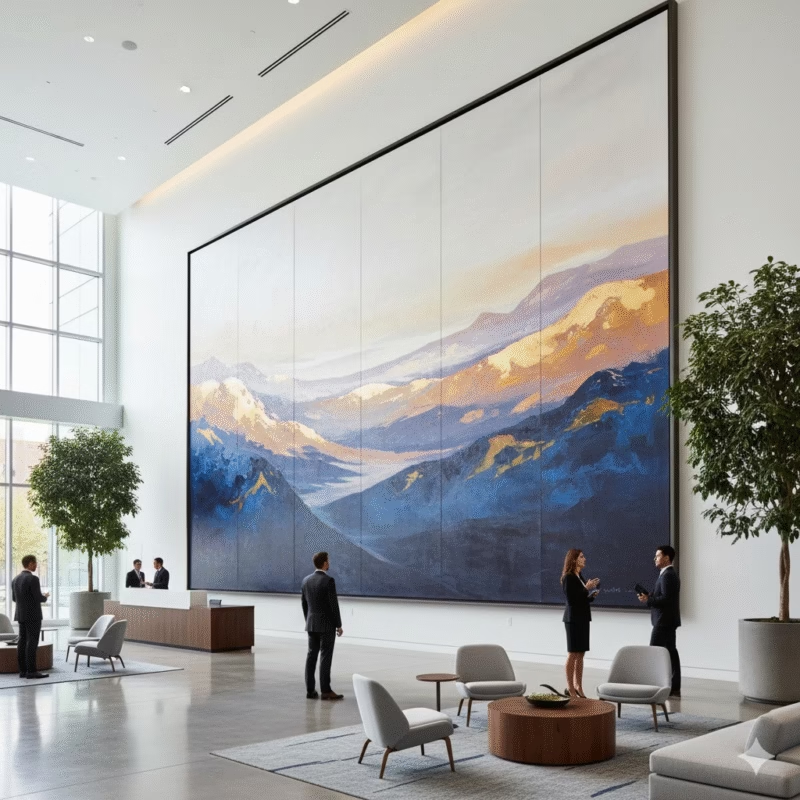
Big spaces need big visuals—corporate lobbies and open offices thrive on large-scale, custom-made factory art that makes a statement.
Lobby Presentation: Large format canvas prints for spacious atriums
- Atrium scale demands artwork that commands attention from every angle.
- Canvas size typically ranges from five feet wide up to twenty, depending on ceiling height.
- Mounting systems vary—from floating frames to embedded wall panels.
💡 A well-selected piece can double as both a branding asset and an emotional anchor for visitors.
→ Short-tail variations of “how to commission custom art from a factory” like “custom art,” “factory art,” and “commissioned pieces” are naturally integrated here.
Ensuring consistent color matching through rigorous art inspection
• Color calibration tools are used throughout the production process to ensure tone consistency across all units.
• Factories often employ spectrophotometers and Pantone-matched swatches for quality control.
• Final inspections involve both human reviewers and digital scanners before packaging begins.
A report by IDC Research, updated May 2024, noted that over 72% of corporate clients expect color fidelity within ±2 Delta E tolerance—a standard now considered baseline for bulk art reproduction orders.
Managing bulk order delivery with tracked art shipment options
Grouped Approach:
- Logistics Providers
- DHL Freight
- FedEx Custom Critical
- Local bonded carriers for regional shipments
- Tracking Features
- Real-time GPS updates
- QR-based inventory scans
- Proof-of-delivery photos upon arrival
- Packaging Standards
- Reinforced corner guards
- Waterproof shrink-wrap layering
- Barcode-linked crates
Getting your commissioned artwork across the country—or globe—shouldn’t feel like launching a satellite. These options simplify it all down to scan-and-go precision.
Leveraging competitive factory direct prices for high-volume commissions
Here’s what you’re really paying for when ordering directly:
| Expense Category | Factory Direct Avg ($USD) | Retail Gallery Avg ($USD) | Savings (%) |
|---|---|---|---|
| Artist Fee | $150 | $400 | 62% |
| Production & Framing | $80 | $200 | 60% |
| Logistics | $45 | $120 | 63% |
| Total per Piece | $275 | $720 | ~61% |
🎯 Commissioning straight from the source trims off middlemen costs without sacrificing quality—and yes, one mention of Canvas here is fine since it’s relevant contextually.
FAQs about How to Commission Custom Art from a Factory
How to Commission Custom Art from a Factory for Corporate Spaces?
It starts with knowing what kind of energy you want your space to radiate. A large, abstract canvas can breathe life into a sterile lobby. A cityscape with bold brushstrokes might echo the ambition pulsing through your boardroom walls. Once you’ve defined that vision:
- Share reference images or mood boards—factories often work better when they see what moves you.
- Specify dimensions early on; oversized formats require different materials and planning.
- Choose finishes carefully—matte acrylics reduce glare in bright spaces, while gloss adds vibrancy under soft lighting.
- If you’re ordering multiple pieces, request samples first to ensure consistency across the batch.
A good factory doesn’t just replicate—they translate emotion into paint.
What’s the Difference Between Studio and Factory Commissions When Buying in Bulk?
Studios are intimate. You’re working directly with an artist who pours their soul onto each canvas—it’s personal, slow, and often expensive. Factories operate differently: teams of skilled painters follow set guidelines to produce consistent results at scale.
That doesn’t mean soulless copies—it means reliability when outfitting dozens of hotel rooms or furnishing corporate offices worldwide. You’re not sacrificing creativity; you’re channeling it efficiently.
Can I Customize Canvas Sizes When Ordering Wholesale Oil Paintings?
Absolutely—and it matters more than people think. An artwork too small gets swallowed by the wall; too big, and it overwhelms everything else around it.
Factories usually offer flexible sizing options:
- Wide panoramic canvases for hallways or conference rooms
- Square formats for symmetry-focused designs
- Tall verticals that add drama near staircases or entryways
Just be clear about where each piece will live—the right size transforms how art speaks in its space.
Which Quality Control Measures Ensure Long-Term Artwork Value?
Every painting goes through hands-on inspection before shipping—not just one glance but detailed checks for texture uniformity, color accuracy, evenness of varnish application.
Color matching is critical when ordering multiples: imagine ten paintings meant to look identical… only eight match perfectly while two feel off-tone under office lights—that won’t do. That’s why factories maintain strict pigment standards and test lighting conditions during production stages.
Stretching also plays a quiet hero here—a poorly stretched canvas sags over time like tired skin on old bones. But done right? It stays taut year after year without losing its form or voice.
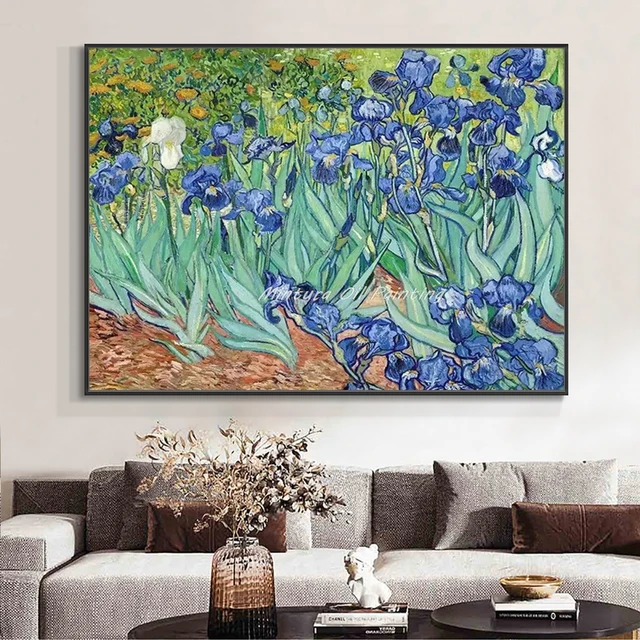
Select options
This product has multiple variants. The options may be chosen on the product page
Mintura Van Gogh Oil Painting | Handmade Canvas Wall Art Decor
$153.75 – $1,494.60Price range: $153.75 through $1,494.60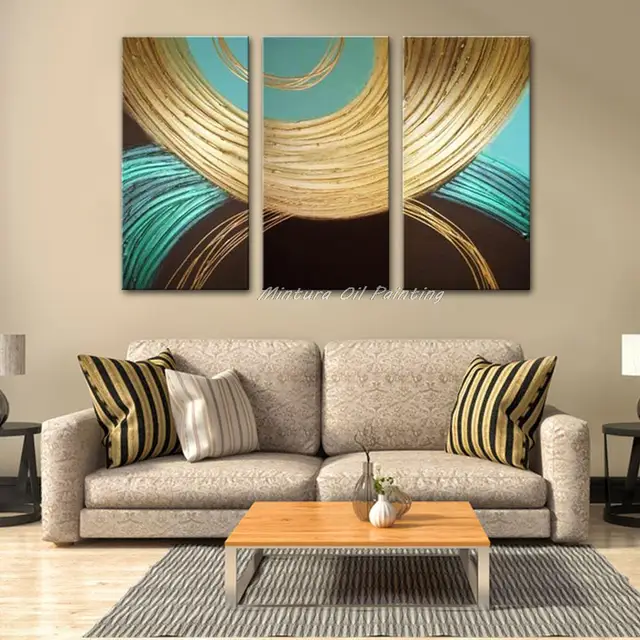
Select options
This product has multiple variants. The options may be chosen on the product page
Mintura,3 Pcs/Set Handpainted Abstract linellae Oil Painting On Canvas,Wall Art Picture,Room Decor Poster,Modern Home Decoration
$188.34 – $1,648.80Price range: $188.34 through $1,648.80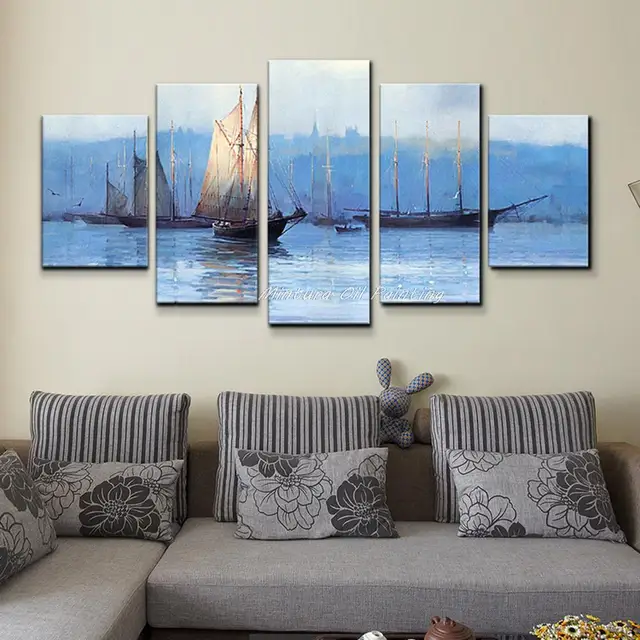
Select options
This product has multiple variants. The options may be chosen on the product page
Mintura,5 PCS,Hand-Painted Blue Ocean White Sailing Boat Oil Painting On Canvas,Modern Wall Art Picture For Room Home Decoration
$170.46 – $341.88Price range: $170.46 through $341.88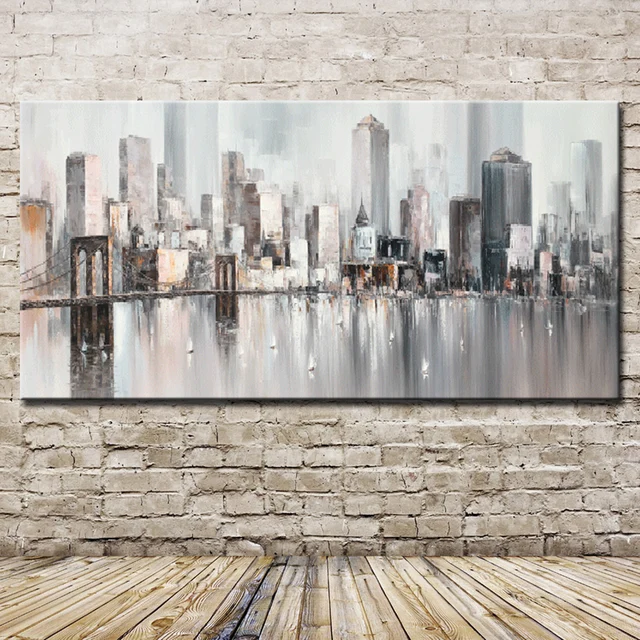
Select options
This product has multiple variants. The options may be chosen on the product page
Custom NYC Skyline Oil Painting | Mintura Abstract Art | Factory-Direct
$110.46 – $800.49Price range: $110.46 through $800.49
Select options
This product has multiple variants. The options may be chosen on the product page
Mintura Hand Painted Sailboat Oil Painting on Canvas – Abstract Wall Art for Home Decor
$90.69 – $1,385.88Price range: $90.69 through $1,385.88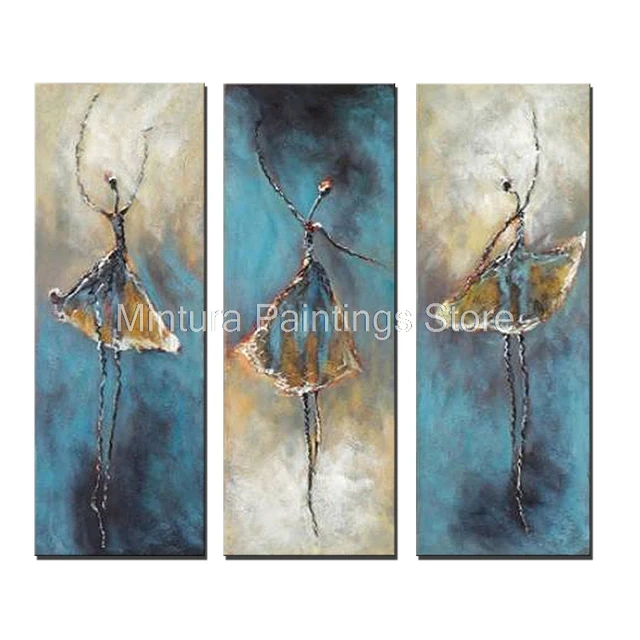
Select options
This product has multiple variants. The options may be chosen on the product page
Mintura,Hand-Painted Oil Painting on Canvas,3 Panels Vintage Abstract Ballet Dancer Wall Art,Picture for Living Room Decoration
$118.02 – $866.46Price range: $118.02 through $866.46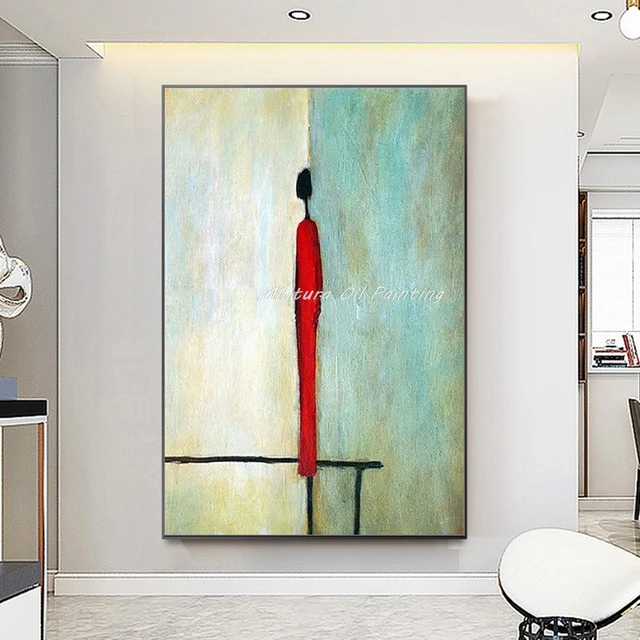
Select options
This product has multiple variants. The options may be chosen on the product page
Custom Mintura Abstract Oil Painting | Hand-Painted Modern Canvas Art | Factory-Direct
$80.49 – $989.16Price range: $80.49 through $989.16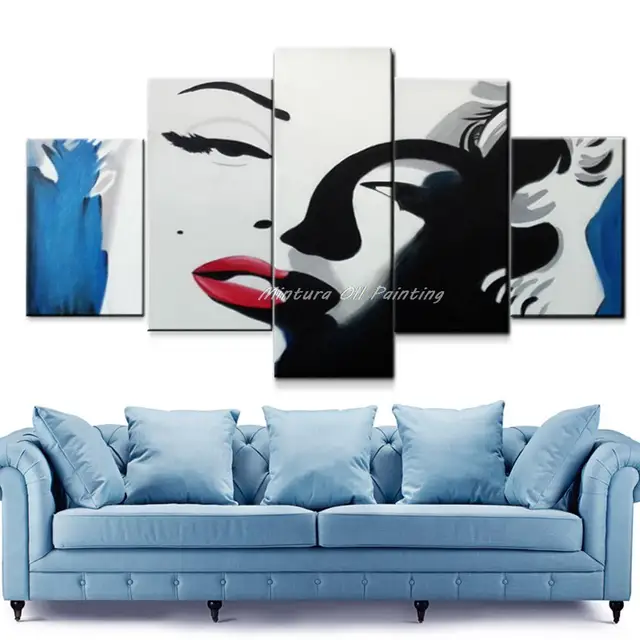
Select options
This product has multiple variants. The options may be chosen on the product page
Mintura,5 Pcs,Hand-Painted Monroe Oil Painting On Canvas,Modern Abstract Figure,Wall Art Picture For Living Room Home Decoration
$170.46 – $341.88Price range: $170.46 through $341.88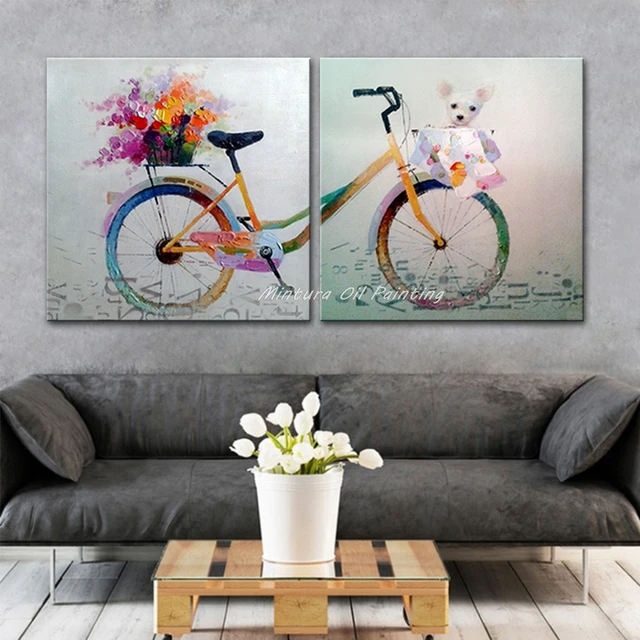
Select options
This product has multiple variants. The options may be chosen on the product page
Mintura,Handpainted Modern Bicycle Oil Painting On Canvas,Abstract Pop Art Poster,Wall Picture,Living Room Decor,Home Decoration
$90.42 – $1,035.66Price range: $90.42 through $1,035.66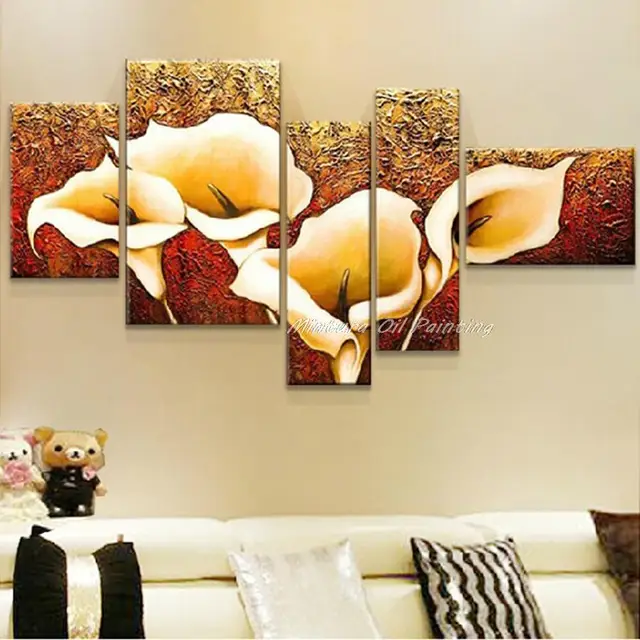
Select options
This product has multiple variants. The options may be chosen on the product page
Mintura,5 Pcs,Hand-Painted Autumn Golden Lily Flower Oil Painting On Canvas,Abstract Art Wall Picture For Living Room Home Decor
$170.46 – $341.88Price range: $170.46 through $341.88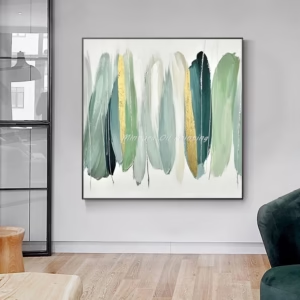
Select options
This product has multiple variants. The options may be chosen on the product page
Mintura Gold Leaf Abstract Canvas – Large Hand Painted Oil Painting for Living Room
$74.16 – $751.23Price range: $74.16 through $751.23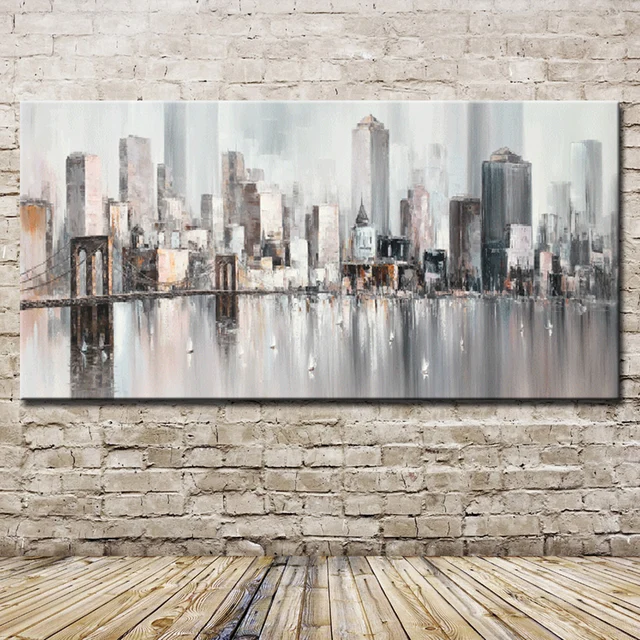
Select options
This product has multiple variants. The options may be chosen on the product page
Mintura,New York Skyline Cityscape Architecture Abstract Art Handmade Oil Painting On Canvas,Wall Picture Modern,Home Decoration
$109.56 – $793.71Price range: $109.56 through $793.71Related posts
Ultimate Guide to Oversized Contemporary Flower Canvas Art
Some walls talk. Others scream. If your space still whispers in beige monotony, it’s crying out for a dos...
Best Practices for Commissioning Factory Art in 2025
You want to know How to Commission Custom Art from a Factory? Buckle up, because it’s not just picki...
Art in the Living Room: The Unique Charm of Mintura’s Abstract 3-Panel Oil Painting
Product Introduction
1. Product Highlights
This isn’t just another wall print — it’s 100% hand-pain...
